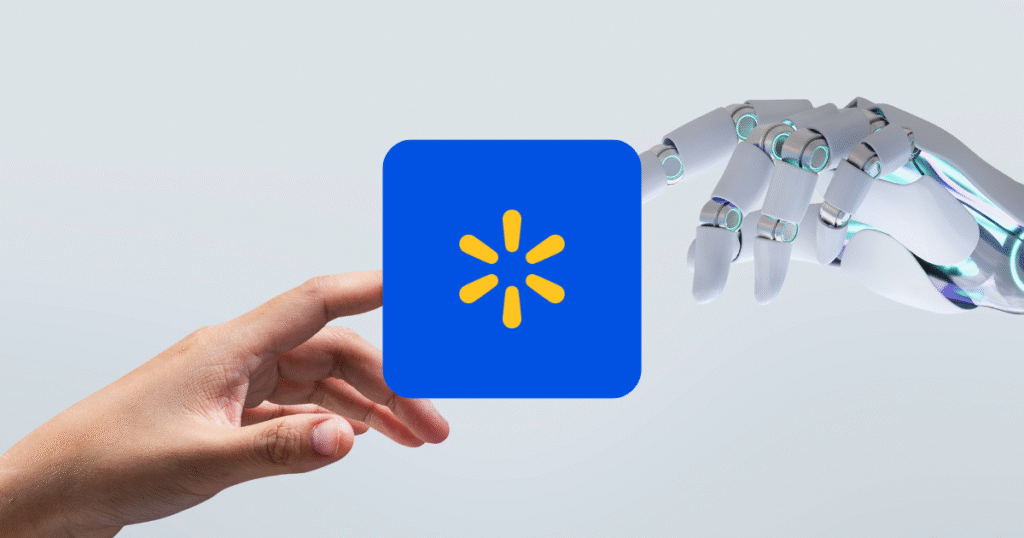If you are wondering how to make AI operational, not theoretical, the Walmart AI strategy 2025 offers a clear roadmap. Walmart is not experimenting on the margins. They are embedding AI into the core of how their business operates, signaling both to employees and the market that artificial intelligence is fundamental to their future.
CEO Doug McMillon summarized it plainly:
“We’re biased toward growth as it relates to AI.”
Walmart’s approach reveals three big lessons in making AI real:
TL;DR
The Walmart AI strategy 2025 shows how to move beyond pilots and into structural change. By assigning executive ownership, building intelligent agents for key audiences, and embedding AI directly into workflows, Walmart demonstrates how AI can accelerate growth, not just efficiency.
1. Executive Ownership Defines Walmart’s AI Strategy 2025
One of Walmart’s boldest moves is appointing a senior executive role, reporting directly to the CEO, to lead AI acceleration. This is not just about governance. It is a signal to the entire organization and to external stakeholders that AI is a top-tier priority.
This reflects a broader shift toward scaling AI initiatives across enterprises, a theme highlighted in MIT Sloan Management Review on making AI work at scale.
Why This Matters
- AI initiatives often stall without clear accountability.
- Executive sponsorship ensures AI is funded, aligned with strategy, and measured.
- Direct reporting to the CEO elevates AI to the same importance as supply chain or finance.
Lesson: To operationalize AI, create leadership structures that anchor it in the C-suite.
2. Building AI ‘Super Agents’ for Customers, Associates, and Partners
Rather than deploying fragmented tools, Walmart is developing four AI-driven “super agents” tailored to its ecosystem:
- Sparky (Customers): Personalized search, discovery, and assistance.
- Associates: Tools that streamline onboarding, scheduling, and task management.
- Partners (Suppliers/Sellers): Simplified collaboration and supply chain visibility.
- Developers: Accelerated integration and system innovation.
Doug McMillon made it clear: these agents are not add-ons. They are being built “into the core of how we operate.”
Lesson: AI creates the most value when it consolidates touchpoints into proactive, intelligent systems.
3. Embedding AI Into Business-Critical Workflows
AI at Walmart is not confined to chatbots or surface-level tools. It is woven into operational fabric:
- Digital twins of facilities for simulation and planning.
- Dynamic delivery windows for logistics optimization.
- Forecasting models for supply chain agility.
- Enhanced customer discovery in e-commerce.
This approach turns AI into a platform for structural innovation, not just efficiency. Walmart is using AI to make faster decisions, anticipate customer needs, and scale more intelligently.
Lesson: True AI adoption means embedding it into core workflows, not running it as a side experiment.
Why Walmart’s AI Strategy 2025 Is a Blueprint for Businesses
It proves that AI is not an overlay. It is a rebuild. For other businesses, the roadmap is clear:
- Assign executive ownership to AI.
- Build intelligent agents tailored to your key stakeholders.
- Embed AI into workflows that drive growth and innovation.
AI will not deliver value in theory. It delivers value when it changes how you operate.
Related content you might also like:
- Walmart is buying Vizio for $2.3B – What it Means for the Future of Retail, Media, and Advertising
- The Human Side of Tech: How HR Leaders Can Drive Innovation and Disrupt Tradition
- Why Don’t Retail Sales Show More Seasonality?
- Access over Ownership



